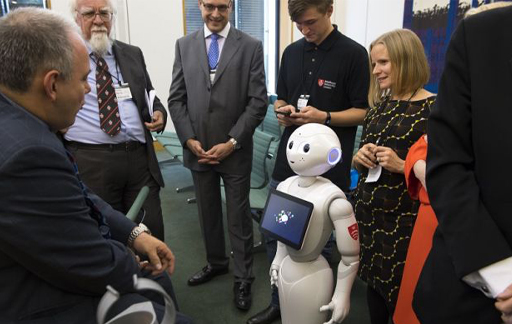Session 8: From thinking tools to AI
Introduction
At the time this session was written (February 2019), artificial intelligence (AI) is a buzz word and speculation is rife about its benefits and dangers to humanity. Politicians and the public have started to take notice. In the UK, the House of Lords Select Committee on Artificial Intelligence released its report ‘AI in the UK: ready, willing and able?’ and the news is populated with headlines such as:
- Crime prediction software ‘adopted by 14 UK police forces’ (Kelion, 2019)
- Artificial intelligence learns ‘deep thoughts’ by playing Pictionary (Cuthbertson, 2019)
- Women are being pushed out of workforce by AI and job automation (Young, 2018)
- A robot pretended to be a politician for the day, and she had just the right amount of artificial intelligence (Peck, 2018; see Figure 1).
- The AI program that can tell whether you may go blind (Thiagarajan, 2019).
In this course you have learned about several digital thinking tools. The emphasis is on tools: ‘something necessary or useful for doing one’s job’ (Longman, 1987). But will such tools be needed in the future? Will the rise of AI mean that our thinking will be outsourced wholesale to artificially intelligent agents? And will that also make us, humans, redundant?
In this session, you’ll examine these questions critically. We’ll go back in time, to look at some of the historical roots behind the dream of a thinking machine. We will also look at the successes and failures of recent AI technologies.
Activity 1 Mapping this session
This session is an opportunity to apply the thinking tools that you encountered in this course. As you study this session, create your own argument map for the main claim that AI eliminates the need for digital thinking tools. At the end of this session you will be invited to share your map (as a .jpg or .bmp file) and view the maps that other learners have created in Activity 2 Sharing your argument map.
By the end of this session, you will be able to:
- discuss some of the historical precedents for the current fascination with thinking machines
- describe some of the enablers of the current AI success stories
- describe some of the limitations of current AI technologies
- discuss your own analysis of the claim that AI eliminates the need for digital thinking tools.

